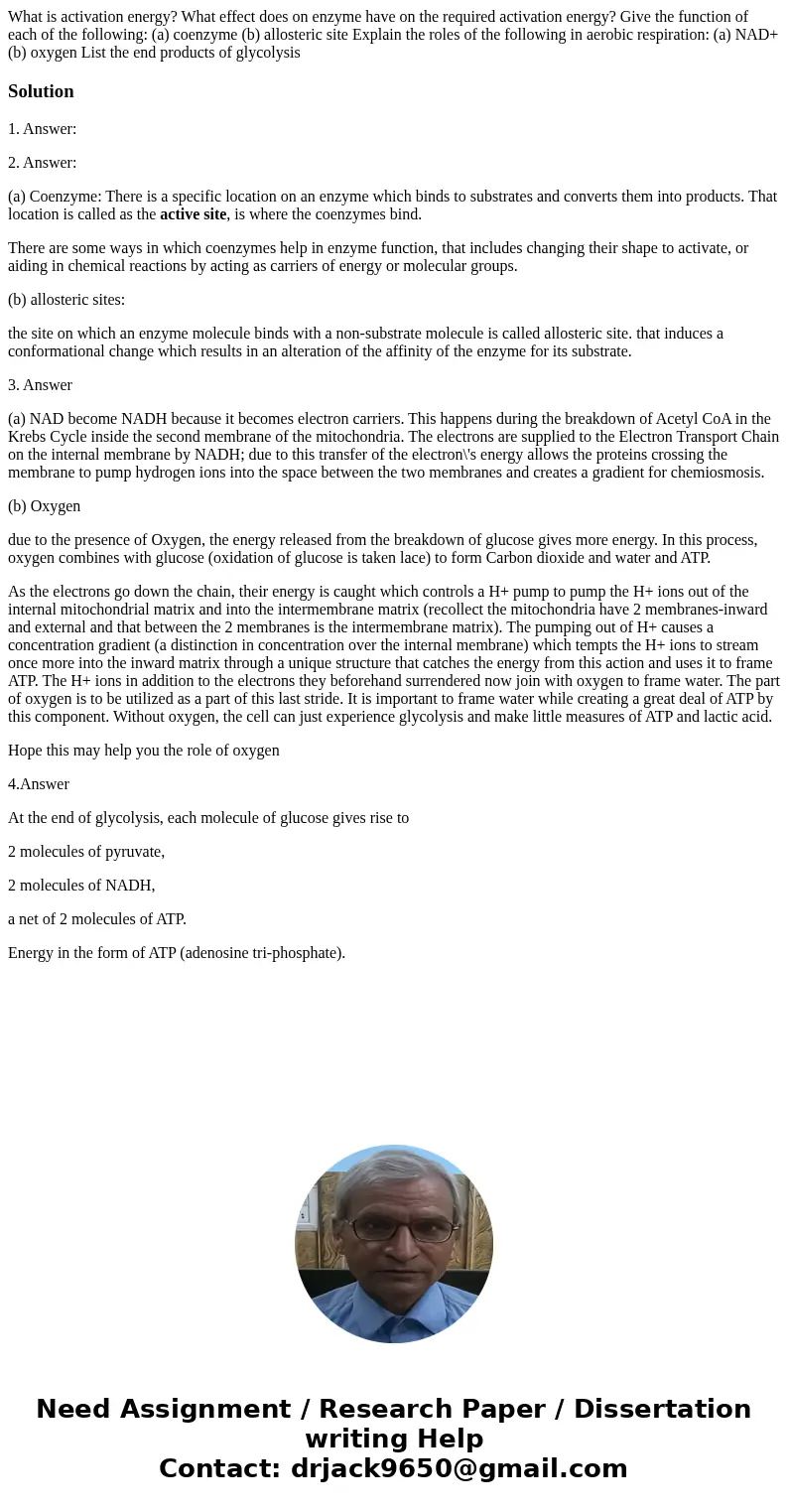What is activation energy What effect does on enzyme have on
Solution
1. Answer:
2. Answer:
(a) Coenzyme: There is a specific location on an enzyme which binds to substrates and converts them into products. That location is called as the active site, is where the coenzymes bind.
There are some ways in which coenzymes help in enzyme function, that includes changing their shape to activate, or aiding in chemical reactions by acting as carriers of energy or molecular groups.
(b) allosteric sites:
the site on which an enzyme molecule binds with a non-substrate molecule is called allosteric site. that induces a conformational change which results in an alteration of the affinity of the enzyme for its substrate.
3. Answer
(a) NAD become NADH because it becomes electron carriers. This happens during the breakdown of Acetyl CoA in the Krebs Cycle inside the second membrane of the mitochondria. The electrons are supplied to the Electron Transport Chain on the internal membrane by NADH; due to this transfer of the electron\'s energy allows the proteins crossing the membrane to pump hydrogen ions into the space between the two membranes and creates a gradient for chemiosmosis.
(b) Oxygen
due to the presence of Oxygen, the energy released from the breakdown of glucose gives more energy. In this process, oxygen combines with glucose (oxidation of glucose is taken lace) to form Carbon dioxide and water and ATP.
As the electrons go down the chain, their energy is caught which controls a H+ pump to pump the H+ ions out of the internal mitochondrial matrix and into the intermembrane matrix (recollect the mitochondria have 2 membranes-inward and external and that between the 2 membranes is the intermembrane matrix). The pumping out of H+ causes a concentration gradient (a distinction in concentration over the internal membrane) which tempts the H+ ions to stream once more into the inward matrix through a unique structure that catches the energy from this action and uses it to frame ATP. The H+ ions in addition to the electrons they beforehand surrendered now join with oxygen to frame water. The part of oxygen is to be utilized as a part of this last stride. It is important to frame water while creating a great deal of ATP by this component. Without oxygen, the cell can just experience glycolysis and make little measures of ATP and lactic acid.
Hope this may help you the role of oxygen
4.Answer
At the end of glycolysis, each molecule of glucose gives rise to
2 molecules of pyruvate,
2 molecules of NADH,
a net of 2 molecules of ATP.
Energy in the form of ATP (adenosine tri-phosphate).

 Homework Sourse
Homework Sourse